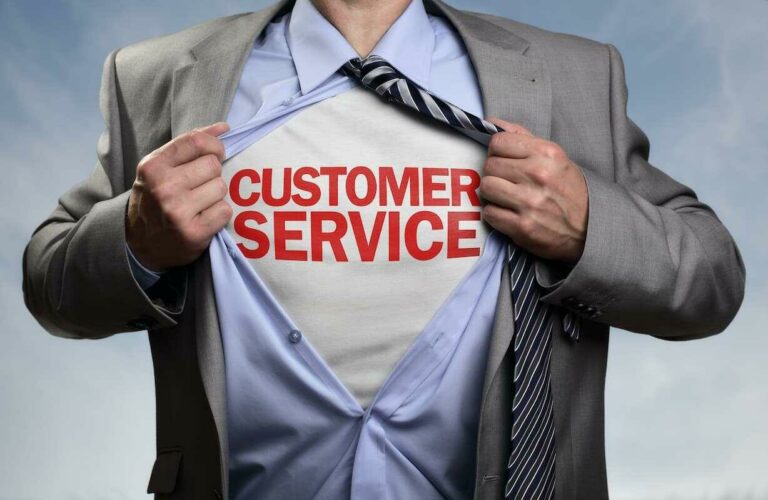Content
Peer-to-peer payments have gained market share and consumer popularity as a convenient way to send and receive money without the hassle of getting cash or writing a check. Some of the most prominent P2P payment apps include PayPal, Venmo, Zelle, Cash App, and Google, and Apple Pay. These services are linked to credit and debit accounts and encrypt personal information for security. Cloud technology can also streamline previously cumbersome processes for banks, such as onboarding new clients, opening accounts, and managing regulatory compliance.
- The value of a CBDC would be more stable than that of cryptocurrency, making it a more attractive option for merchants.
- As working patterns and supply chains evolve in the wake of the pandemic, businesses may have to adjust their own working capital and liquidity strategies to help ensure they can handle the new normal and their businesses’ growth strategies.
- In traditional banking, customers can at least force themselves to get out of their homes and storm the nearest bank branch to settle matters.
- Ideally the vendor options would all be ranked, and you could easily draw out which furniture company has the highest environmental rating.
Leading card providers such as Visa, Mastercard, American Express, and Discover have started issuing virtual payments to better protect their customers during online and mobile payments. With the rise in the risks of identity theft and fraud, biometric authentication can become a reliable and secure option for all the digital payments that take place in the year 2023. As per paymentscardsandmobiles.com, the global expenditure while using payment cards will be around 45 trillion by 2023. Increased investment in these solutions comes in tandem with growing consumer appetite for cloud-driven financial services. In addition to the speed and convenience of instant payments, they also offer improved security and fraud protection, as well as the ability to track payments in real-time. Instant payments by Zelle and RTP by The Clearing House are currently available, while the Federal Reserve is developing the FedNow service.
Just like the rest of global employers, banks are staring at a short supply of professionals skilled in everything AI . Blockchain has the potential to boost the global economy to $1.76 trillion over the next decade. Military veterans possess invaluable leadership skills and business acumen. WEXVets provides mentorship, development, and camaraderie for veteran employees, empowering them to capitalize on their unique experiences. Small and midsize businesses could be a focal point as you develop your 2023 strategic plans if the data is true and SMBs will ride out this storm better than others. Second, considering the regional diversification of supply chain, especially given the continued geopolitical tension and the continued delays.
Online-Only Banks
Based on figures from 2020, the biggest trend in payment innovations is the rise of mobile payments, especially during the COVID-19 pandemic when more transactions shifted online . But it’s not just online purchasing that is covered by mobile payments. In-store transactions are also projected to rise to more than 2.7 billion by 2022, which will push the global ecommerce transaction value to over $5.4 trillion by 2025 . While new Fintech startups keep emerging, the old banks and traditional financial institutions are not just going to sit back and watch.

Renewing operating models to shift their primary focus from operations and onto putting product and customer needs first. However, there are still about 1.4 billion people worldwide who remain unbanked, according to the World Bank. There is lots of potential being – and yet to be made – with this tech. According to McKinsey, AI can deliver incremental value of up to $1 trillion each year if harnessed with success. As per mccrindle.com, globally there are almost 2 billion Gen-Z population in 2022.
Why Fintech Is Growing So Fast and How to Break Into This White-Hot Industry
This website is using a security service to protect itself from online attacks. There are several actions that could trigger this block including submitting a certain word or phrase, a SQL command or malformed data. As part of this phase, payments are becoming an enabling function that is embedded and invisible to provide an immersive, seamless, and frictionless customer eXperience. 2021 was a year of transition for the payments industry as we moved towards Payments 4.X − an evolutionary, COVID-19-sparked era that’s fueling even more industry consolidation and attracting tech-expert ecosystem players. We are a global leader in partnering with companies to transform and manage their business by harnessing the power of technology.
This use of temporary codes enhances the security in the bank accounts by leaps and bounds. This example shows us how codes can shape the way we manage bank account systems. By subscribing to email updates you can expect thoroughly researched perspectives and market commentary on the trends shaping global markets. Topics may span disruptive tech, income strategies, and emerging economies. For example, PayPal acquired Curv, Nuvei acquired Simplex as well as new partnerships, cryptocurrency feature launches, and significant funding rounds.
Nordic Fintech Challenger Lunar Introduces Payments Solution for Digital Commerce Platforms – Crowdfund Insider https://t.co/OCbgQIVKGr #fintech #trends #technology
— Virtual Consultants (@itvc_) March 5, 2022
RTP and FedNow will provide the backbone of real-time payment services for U.S.-based FDIC-insured institutions. In 2023, we will see more companies in the fintech industry implementing Machine learning and Artificial Intelligence to prevent payment fraud. To build a payment gateway, you will need to partner with a payment processor and acquiring bank. The payment processor will provide technical specifications for integrating your gateway with their system, and the acquiring bank will provide a merchant account to accept digital payments. At this stage, there is a wide gap between what students and families expect from a payment experience, what agents are able to provide and what institutions are willing to prioritize. Digital payments, frictionless transaction experiences, convenient local payment options, and speed of processing are some of the key areas of opportunity for agents.
Biometric Payments Now Include Pay-By-Voice
These platforms have the foundational structure of online banking services built-in and allow users to customize certain elements as per their needs to offer a white-labeled Fintech service. Fintech businesses that are up to speed with the latest trends and adapt their payment processes accordingly will most likely be the best positioned for the future. Hybrid forms of credit-lending is an excellent development for both consumers and merchants. Consumers can spread their payments over time, improving their cash flow, while merchants get paid sooner and have a lower risk of bad debt.
Numerous transformative fintech trends in 2022 are propelling adoption in the $332.5 billion financial technology industry, even in the face of global inflation, a “crypto winter,” and sour geopolitical sentiments. All merchants should be aware of trends in credit card fraud and develop strategies to mitigate those facing the business. Fraud can take many forms, but most types of payment fraud can be detected and prevented through good cybersecurity practices and secure payment processing systems. Though there are many levels of protection available with the use of virtual cards, two-way encrypted payment methods, and more, all businesses must shore up their cybersecurity. Companies who suffer data breaches lose more than just revenue–reputational damage, especially when a company doesn’t perform due diligence, can have long-lasting and severe consequences. Mobile wallets and Near Field Communication enabled payment cards are convenient, fast, and secure payment methods that have seen a large uptick in adoption in recent years.
One way to think about the uptick in digital wallet usage by businesses, is to consider a kind of “consumerfication” of B2B payments. By reproducing the speediness and elegance of consumer apps, companies can keep in step with the times while increasing efficiency. One great feature of WEX’s SMB product, Flume, is digital checks, allowing for rapid and low cost of payments to suppliers. Digital checks are just one example of wallet technology that will shape the future of B2B payments. The digital payment industry is one of fintech’s largest segments and its growth is one of the biggest fintech trends to watch today, especially since its pandemic-instigated 2020 surge has now led to continued adoption in 2022.
Research the market to understand the needs and preferences of potential users. Barrett believes that it’s time for expense and other platforms to step up their game by adding communication features – like Slack, SMS, or WhatsApp – but optimized for financial conversations at work and between friends. We’ll describe fintech trends for digital payments what trends to keep your eyes on, and how you can successfully implement them for your business in the coming year. BNPL solutions are reaching universal acceptance, enabling younger users less interested in existing in the credit ecosystem. A distributed ledger is a database that exists across several locations.
Click, click, WOW. Boost bottom lines + customer loyalty with a kick-ass e-commerce platform.
As technology continues to drive digital payments usage, companies will need to be more proactive and predictive in the payments services they offer to meet evolving customer demands. Owning payments will serve as a proxy for an organization to own the customer experience. As technology and consumer demand continues to disrupt markets and prompt new approaches by financial institutions, fintechs and merchants, it’s clear that 2022 will be another year of large-scale change. With further positive disruption across commerce and money movement, innovation will continue to thrive in an open environment, which will truly unlock the power and potential of digital money. In the coming years, we will see payment methods transitioning from physical cash to digital payment methods. Before the transition concludes, many new trends in digital payments will appear and disappear.
Being innovative and being able to share those innovations with a target audience require two different skill sets and two vastly different resource pools. While fintech start-ups often have the chops and resources for the former in spades, it is those seasoned, more established, and larger firms that have what it takes for the latter. This is because many of today’s most significant innovations are being created by a new generation of businesses that are almost entirely digital.
Cross-border payments
In Europe, the new EU Sustainable Finance Disclosure Regulation will see disclosure requirements becoming tougher, to ensure investors can compare the sustainability profile of different investments more clearly. In APAC, the IMF and the World Bank are among those running the Global Challenge for Retail CBDC, to promote financial inclusion and payment efficiencies. Globally, world leaders came together at the end of 2021 for the United Nations Climate Change Conference to strategize on global action that can be taken to address the climate crisis. We capitalize on enhanced data flows to help banks develop more relevant, personalized products and experiences.

Ideally the vendor options would all be ranked, and you could easily draw out which furniture company has the highest environmental rating. Businesses that were ahead of the curve with digitization – or were digital natives to begin with – found themselves in the strongest position during the pandemic, and will continue to enjoy first-mover advantage going forward. We call these the ‘visionaries’, and these businesses are now exploring and integrating advanced technologies into their offerings, such as AI, predictive decision-making or blockchain. We are seeing Financial institutions in this stage creating digital ecosystems, forming strategic partnerships between banks, fintechs and insurance companies. To fully exploit these relationships, Financial Institutions need to think beyond the headlines, to deliver a truly integrated experience to their clients who can be institutions or every day consumers.
Gen Z: The tech-savvy generation
Contactless payments are convenient because they allow consumers to make purchases without having to handle cash or credit cards. Some of the top players in contactless payments include Apple Pay, Google Pay, andSamsung Pay. With the quickly expanding market for digital wallets, P2P apps, and payment gateways, we predict 2023 will be all about making payments exceedingly frictionless for consumers, both online and in-person. P2P payment apps offer a convenient payment method with unique features to help users better manage personal finances. P2P payment apps may allow users to withdraw money to their personal bank accounts, pay for services, split bills among multiple people, or send money internationally.
Payment Integrations
Bring together disjointed systems and channels into an integrated commerce experience—allowing customers to pay how they want. A successful and well played gamification marketing campaign will result in measurable improvements for any business. It can be as sophisticated as Ackermans and Nike’s, or https://globalcloudteam.com/ as simple as M&Ms, it’s all about playing the cards right. In fact, many banks have closed physical branches and made concerted efforts to strengthen their digital presence as a result of the rise of digital banking. Blockchain technology also helps to disintermediate payments and build greater.
In this day and age of cut-throat competition, companies have to adopt the latest technological systems to stay in the race. If used at an IIAS merchant, simply swipe your card and it will automatically approve anything that’s an eligible expense. Specifically, you can use it anywhere with an Inventory Information Approval System or at merchants that meet the IRS’ 90 percent rule (where 90% of gross sales meet eligibility requirements). Looks like you’ve logged in with your email address, and with your social media. Link your accounts by re-verifying below, or by logging in with a social media account.
To offer banking as a service , a fintech company will typically need to partner with a traditional bank that has the necessary infrastructure and regulatory licenses to provide banking services. The fintech company can then use the bank’s APIs to access and offer these services to its own customers. It can enable fintech companies to offer their customers a more comprehensive suite of financial services, which can increase customer loyalty and retention. As technology evolves, students expect to make cross-border payments with ease, while also having a personalized experience; in their language and in their local currency – regardless of where they are making those payments. Agents benefit from taking advantage of a payment platform that provides the ability to initiate and track tuition fee payments, offers a choice of payment methods and currencies, whilst also being cost-effective. Added benefits, for both agents and institutions, include being able to automate reconciliation processes as well as centralizing the storage of all relevant data.



